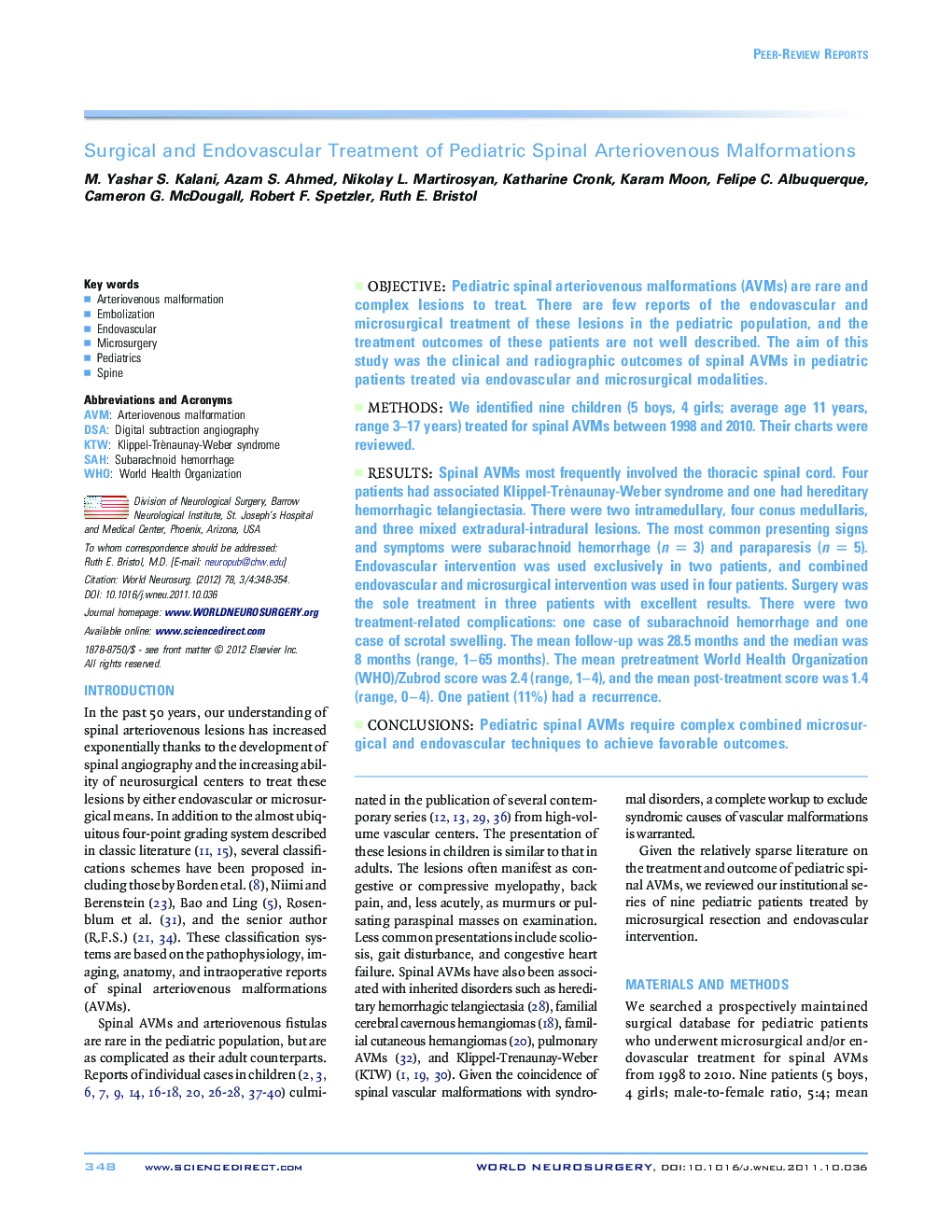| Article ID | Journal | Published Year | Pages | File Type |
|---|---|---|---|---|
| 3096341 | World Neurosurgery | 2012 | 7 Pages |
ObjectivePediatric spinal arteriovenous malformations (AVMs) are rare and complex lesions to treat. There are few reports of the endovascular and microsurgical treatment of these lesions in the pediatric population, and the treatment outcomes of these patients are not well described. The aim of this study was the clinical and radiographic outcomes of spinal AVMs in pediatric patients treated via endovascular and microsurgical modalities.MethodsWe identified nine children (5 boys, 4 girls; average age 11 years, range 3–17 years) treated for spinal AVMs between 1998 and 2010. Their charts were reviewed.ResultsSpinal AVMs most frequently involved the thoracic spinal cord. Four patients had associated Klippel-Trènaunay-Weber syndrome and one had hereditary hemorrhagic telangiectasia. There were two intramedullary, four conus medullaris, and three mixed extradural-intradural lesions. The most common presenting signs and symptoms were subarachnoid hemorrhage (n = 3) and paraparesis (n = 5). Endovascular intervention was used exclusively in two patients, and combined endovascular and microsurgical intervention was used in four patients. Surgery was the sole treatment in three patients with excellent results. There were two treatment-related complications: one case of subarachnoid hemorrhage and one case of scrotal swelling. The mean follow-up was 28.5 months and the median was 8 months (range, 1–65 months). The mean pretreatment World Health Organization (WHO)/Zubrod score was 2.4 (range, 1–4), and the mean post-treatment score was 1.4 (range, 0–4). One patient (11%) had a recurrence.ConclusionsPediatric spinal AVMs require complex combined microsurgical and endovascular techniques to achieve favorable outcomes.
